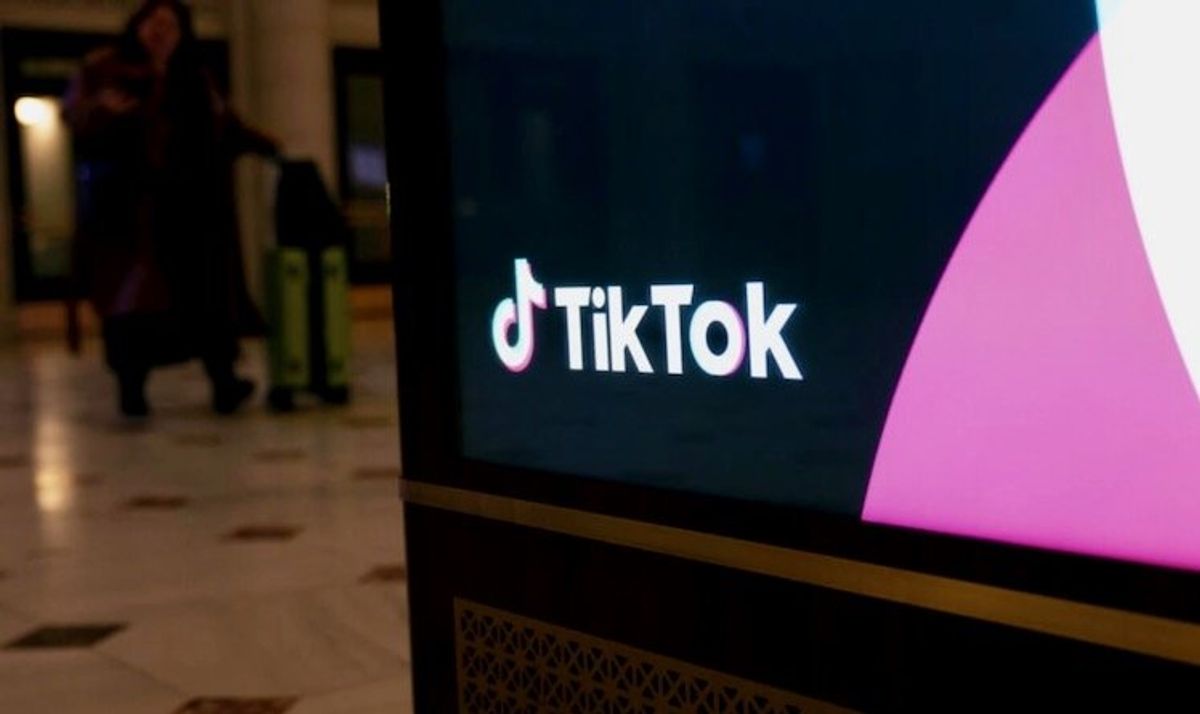Israeli army launches operation at Gaza's Al-Shifa hospital
Gaza Strip (Palestinian Territories) (AFP) – The Israeli army launched Monday an operation around Gaza's largest hospital, Al-Shifa, with witnesses reporting air strikes on the devastated neighbourhood where it is located.
Issued on: 18/03/2024 - 06:13Modified: 18/03/2024 - 06:11
4 min

A donkey-pulled cart passes the rubble of Al-Faruq Mosque, destroyed during Israeli bombardment in Rafah, the southern Gaza Strip, where Israel says it will send in ground troops
© SAID KHATIB / AFP
Israeli soldiers "are currently conducting a precise operation in the area of the Shifa hospital", a statement from the military said.
"The operation is based on intelligence information indicating the use of the hospital by senior Hamas terrorists".
Witnesses in Gaza City told AFP they saw tanks surround the hospital site.
Tens of thousands of Palestinians displaced by the war have sought shelter in the complex, according to the Hamas-run health ministry in Gaza.
The Israeli army had also carried out a November operation in Al-Shifa, sparking an international outcry.
Israel has repeatedly accused Hamas of running military operations from hospitals and other medical centres, claims the militant group denies.
The Hamas government media office in Gaza condemned the operation, saying that "the storming of the Al-Shifa medical complex with tanks, drones, and weapons, and shooting inside it, is a war crime".
The health ministry in the besieged Hamas-run territory said it had received calls from people near the hospital site who claimed there were dozens of casualties.
"No one could transport them to the hospital due to the intensity of gunfire and artillery shelling," the ministry said.
The Israeli army has carried out multiple operations in and around medical facilities across the Gaza Strip since the start of the war.
The war began when Hamas launched an unprecedented attack from Gaza on October 7 that resulted in about 1,160 deaths in Israel, mostly civilians, according to an AFP tally of official figures.
Palestinian militants seized about 250 Israeli and foreign hostages during the October 7 attack, but dozens were released during a week-long truce in November.
Israel believes about 130 remain in Gaza, including 33 -- eight soldiers and 25 civilians -- who are presumed dead.
Vowing to destroy Hamas, Israel has carried out a relentless bombardment and ground offensive that the health ministry in the Palestinian territory says have killed at least 31,645 people, most of them women and children.
According to the Israeli military, troops "were instructed on the importance of operating cautiously, as well as on the measures to be taken to avoid harm to the patients, civilians, medical staff, and medical equipment" at Al-Shifa.
The statement also said Arabic speakers had been deployed in order to "facilitate dialogue with the patients remaining in the hospital".
It added: "There is no obligation for the patients and medical staff to evacuate."
Following its November 15 operation on Al-Shifa, the Israeli military said it had found weapons and other military equipment hidden in the site -- claims Hamas has denied.
It also claimed it had found a 55-metre tunnel in the basement and shared footage that it said proved hostages had been held there, which Hamas also denied.
According to the UN, 155 health facilities in the Gaza Strip have been damaged since the war began.
'Where should they go?'
The Hamas-run health ministry said early Monday that dozens of people had been killed across the Gaza Strip overnight.
Over the weekend, 12 members of the same family were killed when their house was hit in Deir al-Balah in central Gaza.
Palestinian girl Leen Thabit, retrieving a white dress from under the rubble of their flattened house, cried as she told AFP her cousin was killed in the strike.
"She's dead. Only her dress is left," Thabit said.
For several weeks, the focus of the war had been on southern Gaza, where around 1.5 million people who have fled the rest of the devastated territory have sought refuge since the start of the war.
Allies of Israel, including the United States, have warned Prime Minister Benjamin Netanyahu's government against launching a full-scale operation in Rafah near the Egyptian border.
Rafah is the only urban centre in Gaza where Israeli ground troops have yet to enter.
Visiting German Chancellor Olaf Scholz told reporters that if such an offensive resulted in "a large number of casualties" it "would make any peaceful development in the region very difficult".
Israel has insisted, however, that its war aim of eliminating Hamas cannot be achieved without operating across the territory.
On Sunday, Netanyahu vowed civilians crammed into the south of the strip would be able to leave before troops enter in pursuit of Hamas militants.
The office of Netanyahu had on Friday said he approved the military's plan for an operation in Rafah as well as "the evacuation of the population".
"Our goal in eliminating the remaining terrorist battalions in Rafah goes hand-in-hand with enabling the civilian population to leave Rafah," Netanyahu said at a press appearance alongside Scholz.
"It's not something that we will do while keeping the population locked in place."
As others have done, Scholz raised the question:
"Where should they go?"
Israeli soldiers "are currently conducting a precise operation in the area of the Shifa hospital", a statement from the military said.
"The operation is based on intelligence information indicating the use of the hospital by senior Hamas terrorists".
Witnesses in Gaza City told AFP they saw tanks surround the hospital site.
Tens of thousands of Palestinians displaced by the war have sought shelter in the complex, according to the Hamas-run health ministry in Gaza.
The Israeli army had also carried out a November operation in Al-Shifa, sparking an international outcry.
Israel has repeatedly accused Hamas of running military operations from hospitals and other medical centres, claims the militant group denies.
The Hamas government media office in Gaza condemned the operation, saying that "the storming of the Al-Shifa medical complex with tanks, drones, and weapons, and shooting inside it, is a war crime".
The health ministry in the besieged Hamas-run territory said it had received calls from people near the hospital site who claimed there were dozens of casualties.
"No one could transport them to the hospital due to the intensity of gunfire and artillery shelling," the ministry said.
The Israeli army has carried out multiple operations in and around medical facilities across the Gaza Strip since the start of the war.
The war began when Hamas launched an unprecedented attack from Gaza on October 7 that resulted in about 1,160 deaths in Israel, mostly civilians, according to an AFP tally of official figures.
Palestinian militants seized about 250 Israeli and foreign hostages during the October 7 attack, but dozens were released during a week-long truce in November.
Israel believes about 130 remain in Gaza, including 33 -- eight soldiers and 25 civilians -- who are presumed dead.
Vowing to destroy Hamas, Israel has carried out a relentless bombardment and ground offensive that the health ministry in the Palestinian territory says have killed at least 31,645 people, most of them women and children.
According to the Israeli military, troops "were instructed on the importance of operating cautiously, as well as on the measures to be taken to avoid harm to the patients, civilians, medical staff, and medical equipment" at Al-Shifa.
The statement also said Arabic speakers had been deployed in order to "facilitate dialogue with the patients remaining in the hospital".
It added: "There is no obligation for the patients and medical staff to evacuate."
Following its November 15 operation on Al-Shifa, the Israeli military said it had found weapons and other military equipment hidden in the site -- claims Hamas has denied.
It also claimed it had found a 55-metre tunnel in the basement and shared footage that it said proved hostages had been held there, which Hamas also denied.
According to the UN, 155 health facilities in the Gaza Strip have been damaged since the war began.
'Where should they go?'
The Hamas-run health ministry said early Monday that dozens of people had been killed across the Gaza Strip overnight.
Over the weekend, 12 members of the same family were killed when their house was hit in Deir al-Balah in central Gaza.
Palestinian girl Leen Thabit, retrieving a white dress from under the rubble of their flattened house, cried as she told AFP her cousin was killed in the strike.
"She's dead. Only her dress is left," Thabit said.
For several weeks, the focus of the war had been on southern Gaza, where around 1.5 million people who have fled the rest of the devastated territory have sought refuge since the start of the war.
Allies of Israel, including the United States, have warned Prime Minister Benjamin Netanyahu's government against launching a full-scale operation in Rafah near the Egyptian border.
Rafah is the only urban centre in Gaza where Israeli ground troops have yet to enter.
Visiting German Chancellor Olaf Scholz told reporters that if such an offensive resulted in "a large number of casualties" it "would make any peaceful development in the region very difficult".
Israel has insisted, however, that its war aim of eliminating Hamas cannot be achieved without operating across the territory.
On Sunday, Netanyahu vowed civilians crammed into the south of the strip would be able to leave before troops enter in pursuit of Hamas militants.
The office of Netanyahu had on Friday said he approved the military's plan for an operation in Rafah as well as "the evacuation of the population".
"Our goal in eliminating the remaining terrorist battalions in Rafah goes hand-in-hand with enabling the civilian population to leave Rafah," Netanyahu said at a press appearance alongside Scholz.
"It's not something that we will do while keeping the population locked in place."
As others have done, Scholz raised the question:
"Where should they go?"
'Out of harm's way'
The United States, which provides Israel with billions of dollars in military assistance, has said it wants a "clear and implementable plan" to ensure civilians are "out of harm's way".
Gaza is facing the threat of famine, according to the UN, and many residents of the territory have faced displacement multiple times in recent months.
There has been no indication yet of where those crammed into Rafah could go, and any suggestion of Palestinian dispersal outside the Palestinian Territories is highly contentious in the Arab world.
A Hamas proposal for a truce calls for an Israeli withdrawal from "all cities and populated areas" in Gaza during a six-week truce and for more humanitarian aid, according to an official from the group.
International envoys were planning to meet in Qatar soon to revive stalled talks for a ceasefire and hostage release deal.
Israel plans to attend the talks, and a cabinet meeting meant to decide the delegation’s mandate took place on Sunday night, Netanyahu's office said, though the outcome was not immediately known.
© 2024 AFP





















